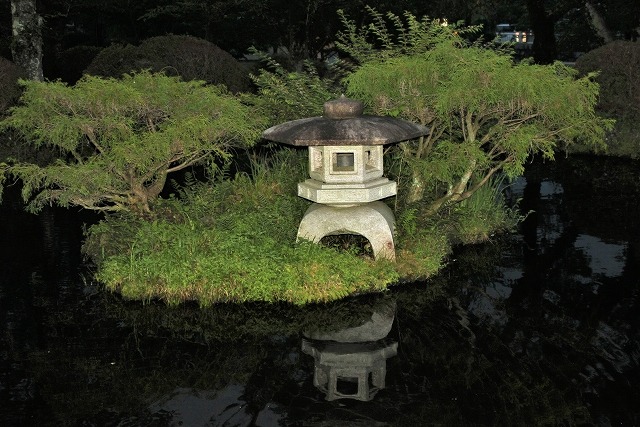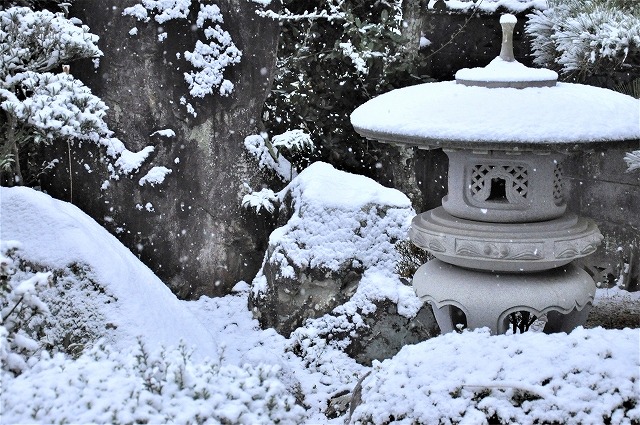Lanterns are installed to provide light, and many of the lanterns in Japanese gardens are made of stone and are called Ishi Toro (stone lanterns). Among stone lanterns, those named Yukimi Toro (snow viewing lanterns) are very popular and often used.
The most distinctive feature of Yukimi Toro is its very large roof. The technical term for this roof is “kasa. The word “yukimi” (snow viewing) probably refers to the taste of the snow piled up on top of the shade.
However, when we look at the location of yukimi lanterns placed in Japanese gardens, we notice that there are certain conditions. That condition is the presence of a water surface nearby. In the case of a karesansui garden, there is no water, but instead gravel represents water. Therefore, in the case of a karesansui garden, a yukimi-doro (snow viewing lantern) is placed near the gravel that represents water.
In fact, yukimi lanterns were originally called uki-mi lanterns and were supposed to be viewed by floating the lanterns on the surface of the water. Therefore, they were arranged in such a way that the Yukimi Lanterns would be seen reflected in the water. The part of the lantern that holds the fire is called the hibukuro (fire pouch), and one can imagine that the sight of the lantern flickering on the surface of the water with the fire lit in the hibukuro is so calming that one loses track of time. For this reason, the shade is made large so that it can be easily reflected on the surface of the water.

Yukimi Toro (snow viewing lanterns) are indispensable as lanterns that create an exceptional atmosphere in Japanese gardens.


